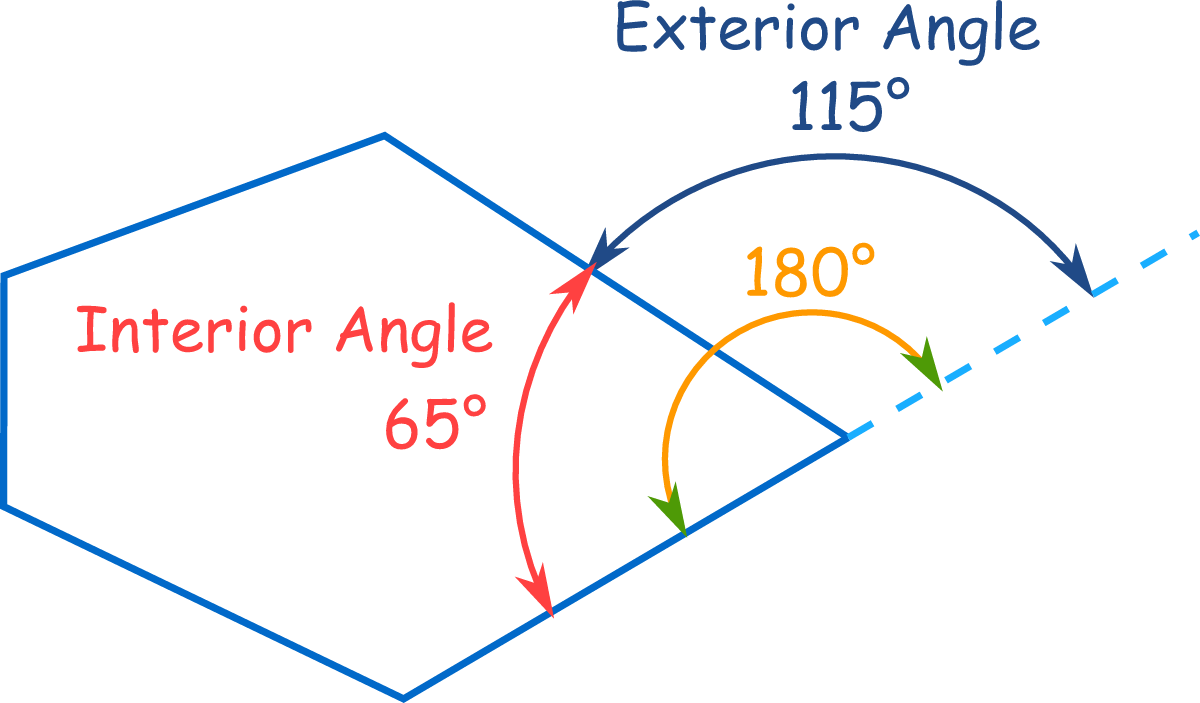You are using an out of date browser. It may not display this or other websites correctly.
You should upgrade or use an alternative browser.
You should upgrade or use an alternative browser.
Triangles and Polygon measurements
- Thread starter Faye
- Start date
topsquark
Senior Member
- Joined
- Aug 27, 2012
- Messages
- 2,363
Since you didn't actually ask the question I'll take the reasonable assumption that you are struggling with finding the angles.
Please show us any work you've been able to do with this problem.
As a suggestion: You don't really need the whole diagram. Consider a regular pentagon. How do you find the interior angles? How do you find the interior angles of a hexagon? Then put the numbers in the diagram and see what you've got.
If you have problems with this, show us your work and we can help you find any flaws.
-Dan
Please show us any work you've been able to do with this problem.
As a suggestion: You don't really need the whole diagram. Consider a regular pentagon. How do you find the interior angles? How do you find the interior angles of a hexagon? Then put the numbers in the diagram and see what you've got.
If you have problems with this, show us your work and we can help you find any flaws.
-Dan
So I come up with 45 degrees, but I’m not sure how to show the steps? We’ve been working on 45-45-90 and 30-60-90 triangles. I know the interior angles have to add up to 180 but I don’t understand how to verify that 45 degrees is the correct answer. I’m new to this forum. Sorry I didn’t post right.
Are you saying you have not been taught how to calculate
the inside angles of a regular polygon?
If so, go here:

the inside angles of a regular polygon?
If so, go here:

Interior Angles of Polygons
An Interior Angle is an angle inside a shape: Another example: The Interior Angles of a Triangle add up to 180°.
www.mathsisfun.com
And yes, I missed a few of my geometry classes and I am trying to catch up. This was one of the assignments from the class I missed. After looking at this I realized what you are saying. I know the interior angles of a triangle add up to 180. And, the pentagon on the picture add up to 540(each side is 108), and the angles of the hexagon add up to 720(each angle is 120 because they are equal). Also, I know all the sides are congruent that are labeled and I know both triangles are 90 degree triangles. But I still don’t understand how to find the angle of BAC. I believe the answer is 30 degrees because It looks like a 30-60-90 triangle to me., but I have to explain how I came up with thirty degrees and I’m not positive that is correct?Are you saying you have not been taught how to calculate
the inside angles of a regular polygon?
If so, go here:

Interior Angles of Polygons
An Interior Angle is an angle inside a shape: Another example: The Interior Angles of a Triangle add up to 180°.www.mathsisfun.com
- Joined
- Nov 24, 2012
- Messages
- 3,021
Suppose we decompose a regular polygon having \(n\) sides into \(n\) isosceles triangles. If we look at just one of these triangles, we know the sum of the two equal angles (which will be equal to an interior angle \(\theta_n\)) and the other angle is \(180^{\circ}\):
[MATH]\theta_n+\frac{360^{\circ}}{n}=180^{\circ}[/MATH]
Hence:
[MATH]\theta_n=180^{\circ}-\frac{360^{\circ}}{n}=\frac{180^{\circ}(n-2)}{n}[/MATH]
Let \(\beta=\measuredangle BAC\)...then we know:
[MATH]2\beta+\theta_5+\theta_6=360^{\circ}[/MATH]
[MATH]2\beta+\frac{180^{\circ}(5-2)}{5}+\frac{180^{\circ}(6-2)}{6}=360^{\circ}[/MATH]
Can you finish?
[MATH]\theta_n+\frac{360^{\circ}}{n}=180^{\circ}[/MATH]
Hence:
[MATH]\theta_n=180^{\circ}-\frac{360^{\circ}}{n}=\frac{180^{\circ}(n-2)}{n}[/MATH]
Let \(\beta=\measuredangle BAC\)...then we know:
[MATH]2\beta+\theta_5+\theta_6=360^{\circ}[/MATH]
[MATH]2\beta+\frac{180^{\circ}(5-2)}{5}+\frac{180^{\circ}(6-2)}{6}=360^{\circ}[/MATH]
Can you finish?
Right! Angles in pentagon = 108, in hexagon = 120.
Surrounding point A are 4 angles: see that?
The 2 angles above the triangle are 108 and 120; ok?
The 4 angles total 360; ok?
So the other 2 angles total 360 - 120 - 108 = 132; ok?
Since these 2 angles are equal, then they each equal 66; got that?
And since angle BAC is one of them, then....?
Surrounding point A are 4 angles: see that?
The 2 angles above the triangle are 108 and 120; ok?
The 4 angles total 360; ok?
So the other 2 angles total 360 - 120 - 108 = 132; ok?
Since these 2 angles are equal, then they each equal 66; got that?
And since angle BAC is one of them, then....?
Right! Angles in pentagon = 108, in hexagon = 120.
Surrounding point A are 4 angles: see that?
The 2 angles above the triangle are 108 and 120; ok?
The 4 angles total 360; ok?
So the other 2 angles total 360 - 120 - 108 = 132; ok?
Since these 2 angles are equal, then they each equal 66; got that?
And since angle BAC is one of them, then....?
Yes, thank you so much!Suppose we decompose a regular polygon having \(n\) sides into \(n\) isosceles triangles. If we look at just one of these triangles, we know the sum of the two equal angles (which will be equal to an interior angle \(\theta_n\)) and the other angle is \(180^{\circ}\):
[MATH]\theta_n+\frac{360^{\circ}}{n}=180^{\circ}[/MATH]
Hence:
[MATH]\theta_n=180^{\circ}-\frac{360^{\circ}}{n}=\frac{180^{\circ}(n-2)}{n}[/MATH]
Let \(\beta=\measuredangle BAC\)...then we know:
[MATH]2\beta+\theta_5+\theta_6=360^{\circ}[/MATH]
[MATH]2\beta+\frac{180^{\circ}(5-2)}{5}+\frac{180^{\circ}(6-2)}{6}=360^{\circ}[/MATH]
Can you finish?
Angle BAC equals 66. Thanks a lot!Right! Angles in pentagon = 108, in hexagon = 120.
Surrounding point A are 4 angles: see that?
The 2 angles above the triangle are 108 and 120; ok?
The 4 angles total 360; ok?
So the other 2 angles total 360 - 120 - 108 = 132; ok?
Since these 2 angles are equal, then they each equal 66; got that?
And since angle BAC is one of them, then....?

